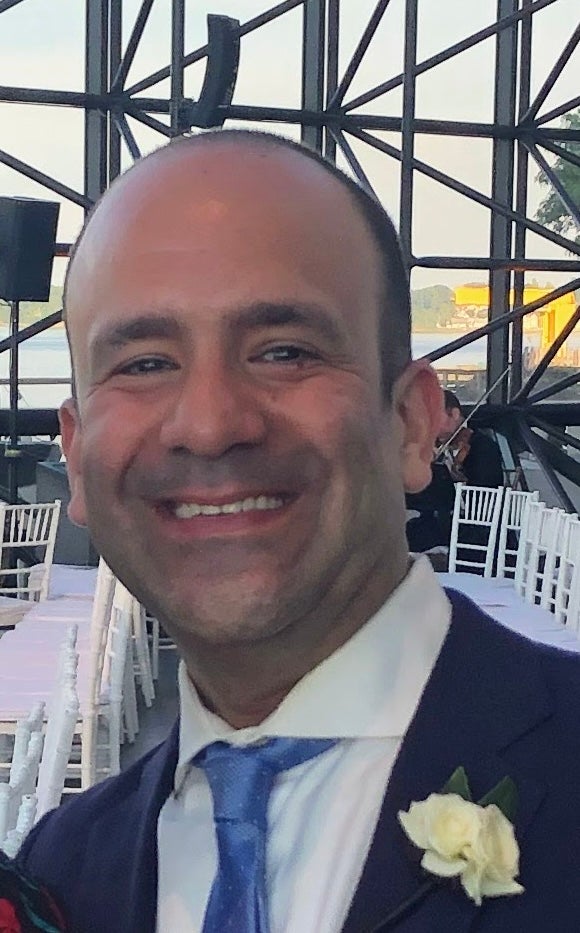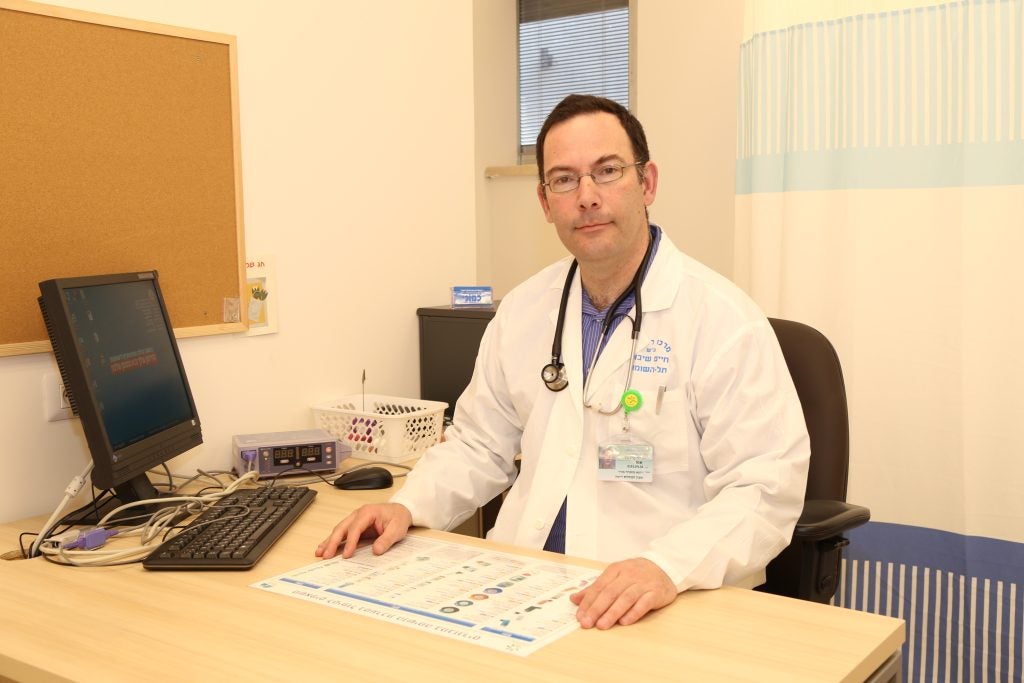
The chronic obstructive pulmonary disorder (COPD) market has laid relatively dormant for the past few years until recently.
Several biologics which have been given the greenlight in asthma have not met the mark in COPD, with both GSK and AstraZeneca facing hurdles.
“We have seen this before, especially in the field of airway disease, asthma and COPD, the first round sometimes failed and then they tweaked the protocol, a slightly different patient population, or a different dose and it worked,” says Dr. Michael Segel, attending physician in pulmonology at the Sheba Hospital, Israel.
UK-based company Verona Pharma has just received approval for its COPD drug Ohtuvayre (ensifentrine). The candidate is the first novel treatment in a decade to get the greenlight from the US Food and Drug Administration (FDA). This comes after the FDA asked for more time to review Regeneron and Sanofi’s Dupixent (dupilumab) in COPD, which if approved would be the first biologic approved in the indication.
GSK’s Nucala hopes for second time lucky
GSK is hoping for a win in the Phase III MATINEE trial of its biologic Nucala (mepolizumab). The company filed to the FDA for approval of Nucala in 2018 but it was denied, with the agency saying it needed more evidence of efficacy.
Following the earlier trials, METREX (NCT02105948) and METREO (NCT02105961), GSK said that Nucala was efficacious and that the number of eosinophils in a patient’s blood may help doctors decide if mepolizumab will work for them. The METREX trial reported an 18% reduction in moderate to severe exacerbations, compared to placebo, but did not meet statistical significance in METREO.

US Tariffs are shifting - will you react or anticipate?
Don’t let policy changes catch you off guard. Stay proactive with real-time data and expert analysis.
By GlobalDataNucala was the first interleukin-5 (IL-5) inhibitor to be approved for marketing, getting a nod from the FDA as a treatment for severe asthma associated with elevated eosinophil levels back in 2015.
The MATINEE trial (NCT04133909) has enrolled 806 COPD patients aged over 40 without asthma who need inhaled corticosteroid (ICS), long-acting beta-agonists (LABA) and long-acting muscarinic antagonist (LAMA) treatments.
The biggest change in the MATINEE trial is that GSK has a more defined patient population which should yield better results, explains Asiyah Nawab, pharma analyst at GlobalData.
“The MATINEE trial has been able to redefine the use of the agent, with more refined criteria on the population and entry criteria of COPD patients,” says Nawab. “It is unfair to say that the failure of the METREX and METREO trial will predict the fate of Nucala’s performance in the MATINEE trial, rather it is a learning-curve for GSK’s R&D team to refine the parameters tested.”
The subgroups selected in the MATINEE trial also line up with those of previously successful candidates adds Dr. Armeen Poor, physician for division of pulmonary and critical care medicine at NYC Health and Hospitals, New York.

“Looking at the subgroups, and looking at the subgroups where Dupixent excelled, these line up. As a result, I think that this will show a statistically and clinically significant benefit.”
AstraZeneca also hoping for success in second Phase III try
The story is similar for AstraZeneca, which is also hoping for a win in its third Phase III study of Fasenra (benralizumab). Two previous trials, GALATHEA (NCT02138916) and TERRANOVA (NCT02155660), both failed to meet the primary endpoints.
The RESOLUTE trial (NCT04053634) is investigating Fasenra in 645 patients with COPD who have had at least two moderate to severe exacerbations in the past year despite being on a controller (ICS, LABA, LAMA).
The primary endpoint of the trial is the annualised rate of moderate or severe COPD exacerbations.
Fasenra is also an IL-5 inhibitor which is approved for use in asthma.
Poor says that AstraZeneca is now targeting a patient population who are more likely to respond, so there are high hopes for the recent Phase III trial.
“The previous Phase III trials for COPD did not meet statistical significance for the 220 blood eosinophils cut off but there was an impressive benefit in those with 300 blood eosinophils and above. That is what AstraZeneca is evaluating now so I expect that to be successful. Depending on the degree of success, it could be looked on very favourably due to its eight-week dosing schedule,” Poor explains.
“The beauty of this particular biologic is the fact that is has been extremely well studied in asthma, which means that it is effective,” says Nawab. “The challenge of this biologic is being able to identify the right subset of COPD patients. Perhaps some of the earlier studies were too narrow of a phenotype, however, the REOSLUTE study has been able to redefine these parameters.”
If Fasenra makes it to market for COPD, Prof. Gerard Criner, chair of Thoracic Medicine and Surgery at the Lewis Katz School of Medicine, Temple University, says that the dosing schedule of one every two months will be a big win over the twice month Dupixent and once monthly Nucala.
Roche holds hopes on pipeline candidate
Roche is also pushing ahead with COPD before asthma for its investigative biologic astegolimab. The company is going against the grain compared to its competitors and hoping for an approval in COPD before gaining approval in the asthma setting, for which the candidate is in Phase II trials.
The Phase III ARNASA trial (NCT05595642) is investigating astegolimab with two different dosing regimens, once every four weeks and once every fortnight, versus placebo.
The trial, which estimates a final enrolment of 1,290 patients globally, has a primary endpoint of annualised rate of moderate and severe COPD exacerbations over the 52-week trial period.
In a Phase IIa study (NCT03615040), the candidate did not show statistical improvement between the treatment arm and placebo arm in the primary endpoint of exacerbation rate. Astegolimab is an IL-33 inhibitor.

Although different to the more common pathway of gaining asthma approval first, there may be some sense in targeting COPD first says Segel.
“The competition of biologics in asthma is fierce,” says Segel. “Of course, it all depends on what the data looks like in COPD – we are hearing that it is looking good but until you see the formal publication, you don’t know.”
Roche’s trial is not including a blood eosinophil count as part of the inclusion criteria, with Poor adding that the IL-33’s could meet an unmet need of patients with lower eosinophil levels.
“If they can really address that lower eosinophil group because that’s where a big unmet need is right now. In patients with less than 300 cells per microliter,, IL-33 appear to be the leading targets to go after it. Dupixent is probably not going to be given on label for patients with eosinophils less than 300 cells per microliter,” Segel says.
“It certainly does appeal to a wider range of COPD patients due to its mechanism of action. IL-33 agents can be promising as it blocks the action of IL-33 in the upper respiratory route, which is far different from blood eosinophils, hence its use in a wider range of patients,” Nawab explains.
Sanofi and Regeneron put in second bid
Sanofi and Regeneron, who continue to wait for FDA approval for Dupixent in COPD, are putting in a bid for a second biologic in the COPD market.
The AERIFY-1 (NCT04701983) and AERIFY-2 (NCT04751487) Phase III trials are investigating the candidate in former and current smokers, aged 40 and over.
Dupixent is an IL-4 and IL-13 inhibitor, with the candidate targeting a specific population of people with evidence of type 2 inflammation. Meanwhile, itepekimab is a fully human monoclonal antibody that binds to and inhibits IL-33, an initiator and amplifier of broad inflammation in COPD.
The alarmin pathway which IL-33 targets has high potential explains Criner, who believes the long term benefits could also be a decrease in the risk of lung cancer which is highly prevalent amongst COPD patients.
“The potential for the alarmin pathway is much more robust than the peripheral blood eosinophil for several reasons. If you can abrogate the cycle of inflammation and repair to the epithelium, you can over time perhaps not only decrease exacerbation rate but transform the biology of the disease progression,” Criner explains. “Another thing is COPD and lung cancer are connected and a potential benefit of these drugs long term is that they could decrease the risk of cancer.”



